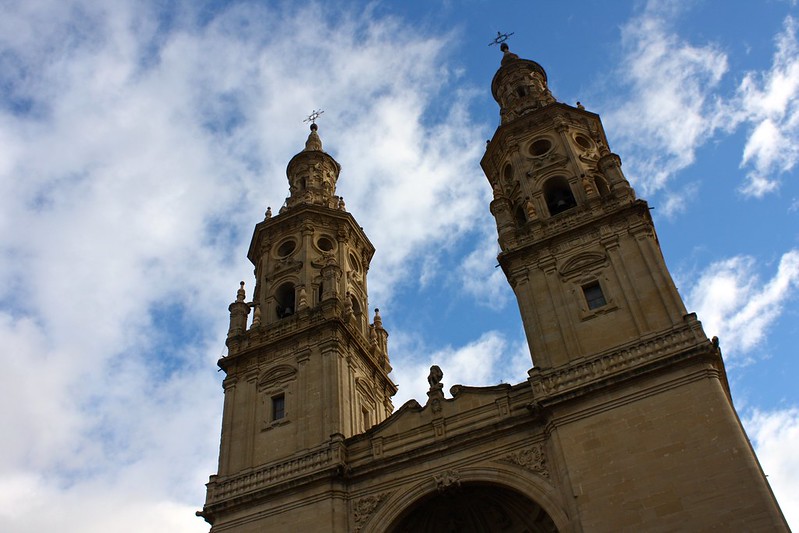Scenes from Logroño, Spain, the Capital of La Rioja
 |
| Logroño Cathedral |
One of my favorite things about keeping up a travel blog is all the connections I’ve been able to make with it, be it meeting up with fellow bloggers while traveling, giving advice to followers via email or comments, or simply making new friends based on shared common interests. Case in point: I would have never made any effort to go out east to La Rioja had it not been for the community I’ve gotten plugged into in the Spain expat/travel blogosphere.
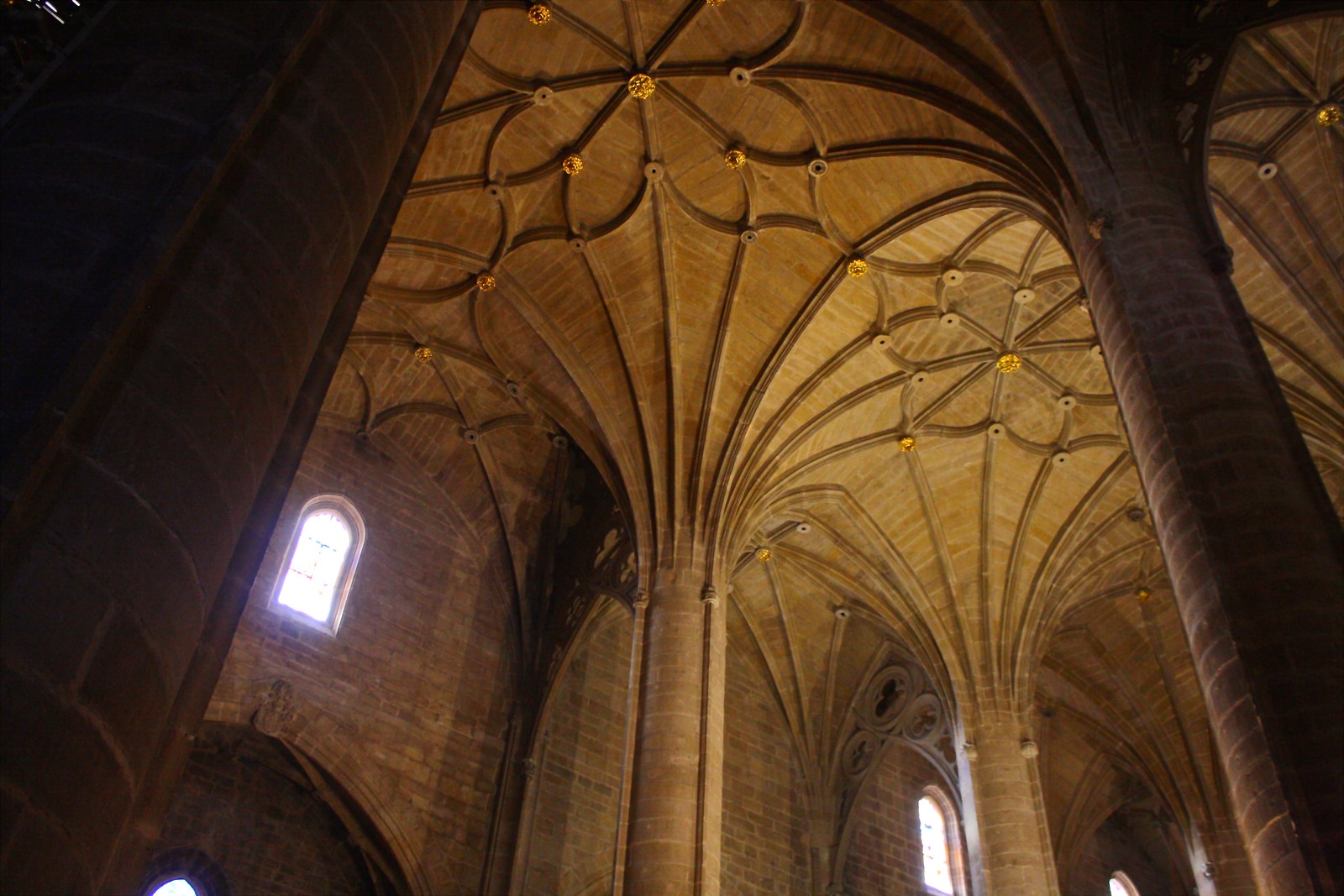 |
| Tree-like columns inside the cathedral |
When I first applied to teach English in Spain way back in 2011, I closely followed Liz Carlson’s Young Adventuress blog, as she was working that year as an auxiliar de conversación in Logroño, the capital of the Rioja region. She raved and raved about this under-appreciated region, its fabulous pinchos, and, of course, its namesake wine. Although she put Logroño on my travel radar, the city never really moved into my “essential visits” list.
Fast-forward to this school year, when my longtime blogger friend Mike began working as a language assistant in the city. We both had made plans to meet up at some point this year, whether in Santiago or La Rioja, but when December rolled around and I had an extra-long holiday weekend, I jumped at the chance to buy train tickets and headed out east.
On my way to Rioja, I made a pitstop in Burgos about two hours west, where I explored its heavenly Gothic cathedral and snacked on smoky roasted chestnuts. When I finally arrived in Logroño, I honestly felt like I was still in the same region—and to an extent, I still was, as the autonomous community of Rioja was broken off from the historic region of Castilla only in the 1970s. The scent of garlicky dishes drifted out of the windows of colorful balconied homes, people walking by on the street had loud conversations in “proper” Castilian Spanish, and a deep blue sky contrasted with warm sandstone churches.
A city founded on the Camino de Santiago
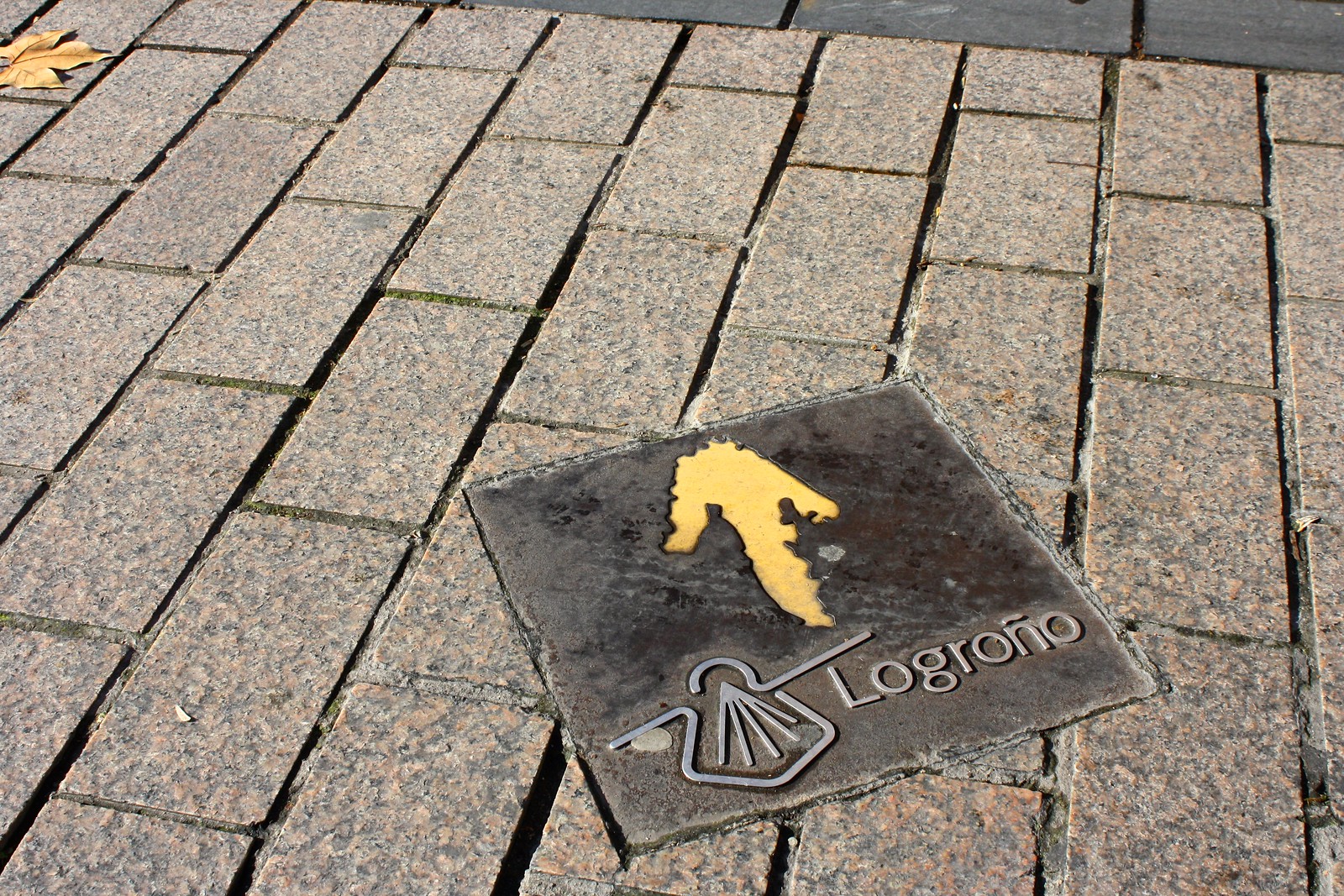 |
| Arrow for the Camino |
Like Burgos, Logroño is one of half-dozen big cities that line the Camino de Santiago’s French Way. This medieval pilgrimage route that traced a course over the Pyrenees and across northern Spain saw millions of pilgrims walk to Christian Europe’s loneliest outpost, Santiago de Compostela. In the process, cities like Pamplona, Burgos, and León grew wealthy on the “pilgrim industry” and at the same time ferried cultural movements like Gothic architecture from France into Spain. Logroño was no different, and today’s pilgrim phenomenon has revived everything from hostels to village bars.
 |
| Camino tapas mural |
I loved seeing a couple Camino-themed murals when Mike showed me around town. The one above is a play on words: El Camino de Santiago se hace por
 |
| Camino stamps mural |
Another mural we stumbled across featured a weary, shirtless pilgrim, whose chest and arms had been stamped with the sellos you get in your credencial or pilgrim passport along the Camino to prove to the Church you have walked the whole Way. On this wall we could see all of the stamps of the camino francés as it passes through the villages of La Rioja.
Wineries and pinchos
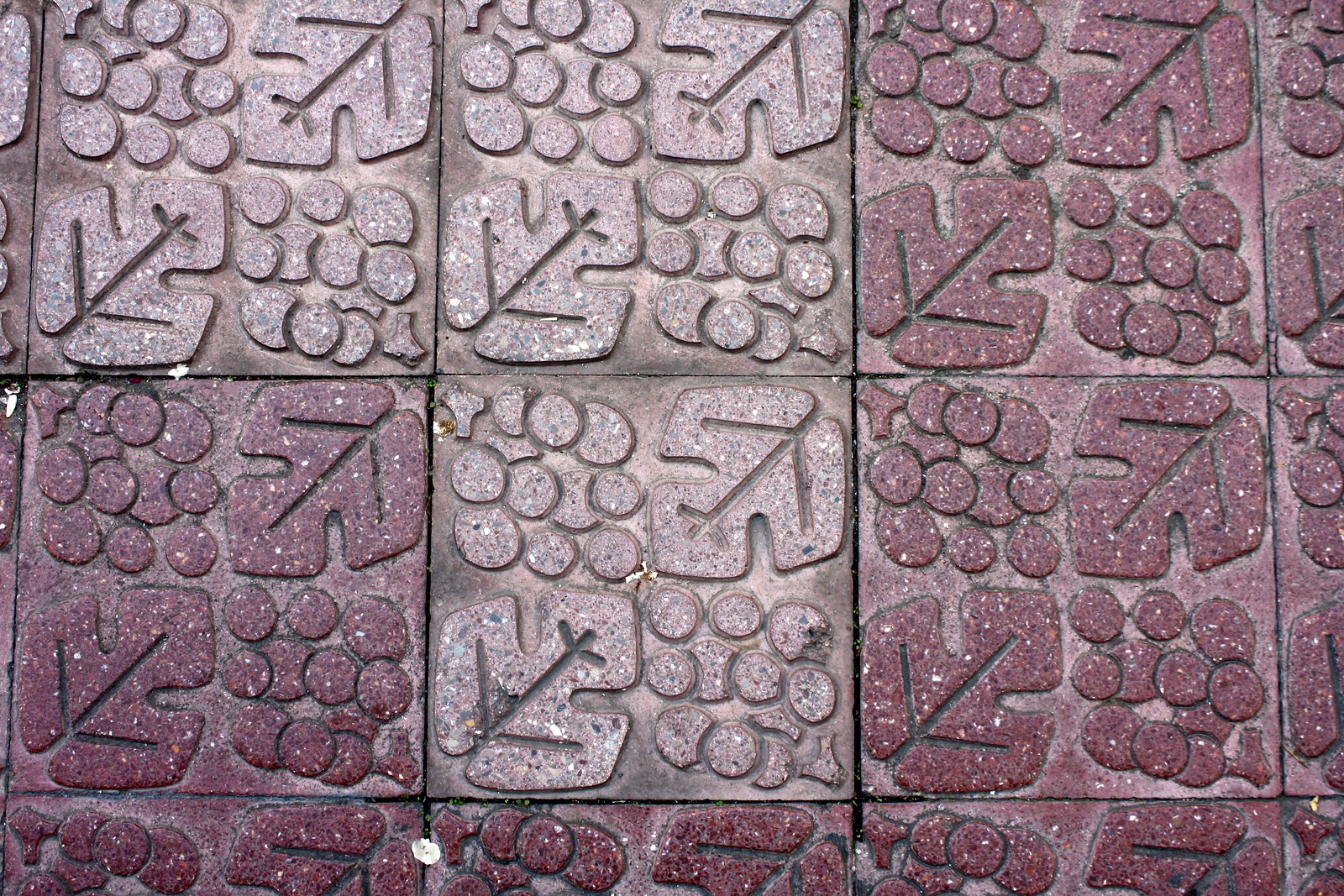 |
| Grapevine sidewalk |
If there’s anything that Logroño is famous for, it’s being the capital of Spain’s Rioja wine region. As prestigious as France’s Bordeaux region or California’s Napa Valley, the wineries based out of this tiny province churn out the country’s finest and most popular wines year after year. While much of the regional identity in Andalucía (especially in the province of Jaén) centers on the olive oil industry, up north the riojanos take great pride in the vineyards that produce Spain’s most internationally-recognized vintages.
When I lived down south in Jaén I really enjoyed getting to visit an olive oil factory (almazara), which really tied together my experiences living among olive groves and tasting all the different denominaciones de origen, or protected regional varieties. So visiting a winery was top on my hitlist for my brief trip to Logroño.
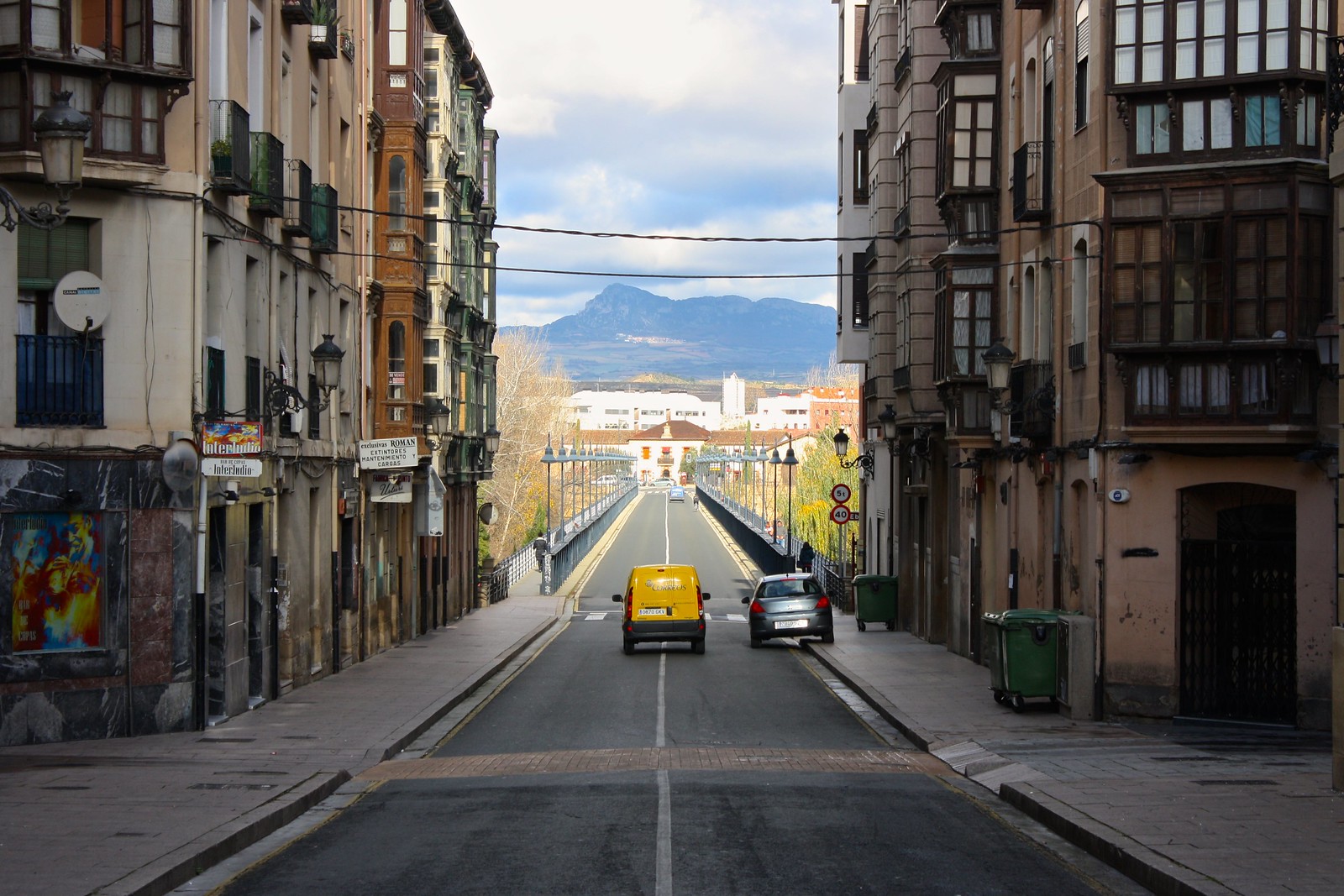 |
| Sagasta Street |
Mike and I signed ourselves up for a tour of Bodegas Franco-Españolas, five minutes north of Logroño’s old town on the other side of the Ebro River. The name has nothing to do with Spain’s infamous Generalísimo, but instead refers to the company’s origins. Back in the 1800s, a blight of Phylloxera aphids nearly wiped out Bordeaux’s vineyards, but before the worst could hit the region, some French vintners rescued some unaffected vines and transplanted them to Rioja; the Franco in Franco-Españolas thus refers to France, not General Franco.
Touring the bodegas or wine cellars gave me a deeper understanding not only of what La Rioja is all about, but also a greater appreciation for wine and winemaking. The hour-long visit (which cost 9€) first took us underground to check out the great oaken casks that historically stored the wine before bottling. The lovely aroma that filled this hall was a soft basso continuo of earthy wooden notes and rich garnet sweetness: like a wine-based potpourri.
 |
| Franco-Españolas Winery |
Although the winery today uses snazzy stainless steel vats to store and age the wine, they still employ oak barrels for the initial fermentation. Something I was completely unaware of was the need to empty one barrel into another every six months to prevent the buildup of wine salts and sediments. At the end of the tour we enjoyed a tasting of one of Franco-Españolas’ aged Reserva bottles, complete with some chorizo, sausage, and crunchy mini breadsticks to munch on.
In the evening, I went out for dinner with Mike, his housemates, and many of their friends from Logroño, and by dinner, I mean hopping from place to place along the famous Calle del Laurel and eating pinchos: small bites of food, often piled on top of a slice of bread, that cost 1-2€ each. We tried a lot of different tiny plates, from home fries with a spicy sauce to savory blood sausage from Burgos, but my favorite was the triple-decker mushroom stacks from Soriano, topped with a teeny tiny shrimp.
Pinchos may have originated to the north in the Basque Country (where they’re spelled pintxos in the Basque language), but here in Logroño they were much, much cheaper. Don’t get me wrong, you can’t beat the food in San Sebastián—I still fantasize about the foie gras I had there—but the pinchos scene in Logroño felt much more relaxed, local, and affordable.
Have you ever gone out for pinchos on Calle Laurel before? What’s your favorite wine region in Spain? Share your thoughts below in the discussion thread!
